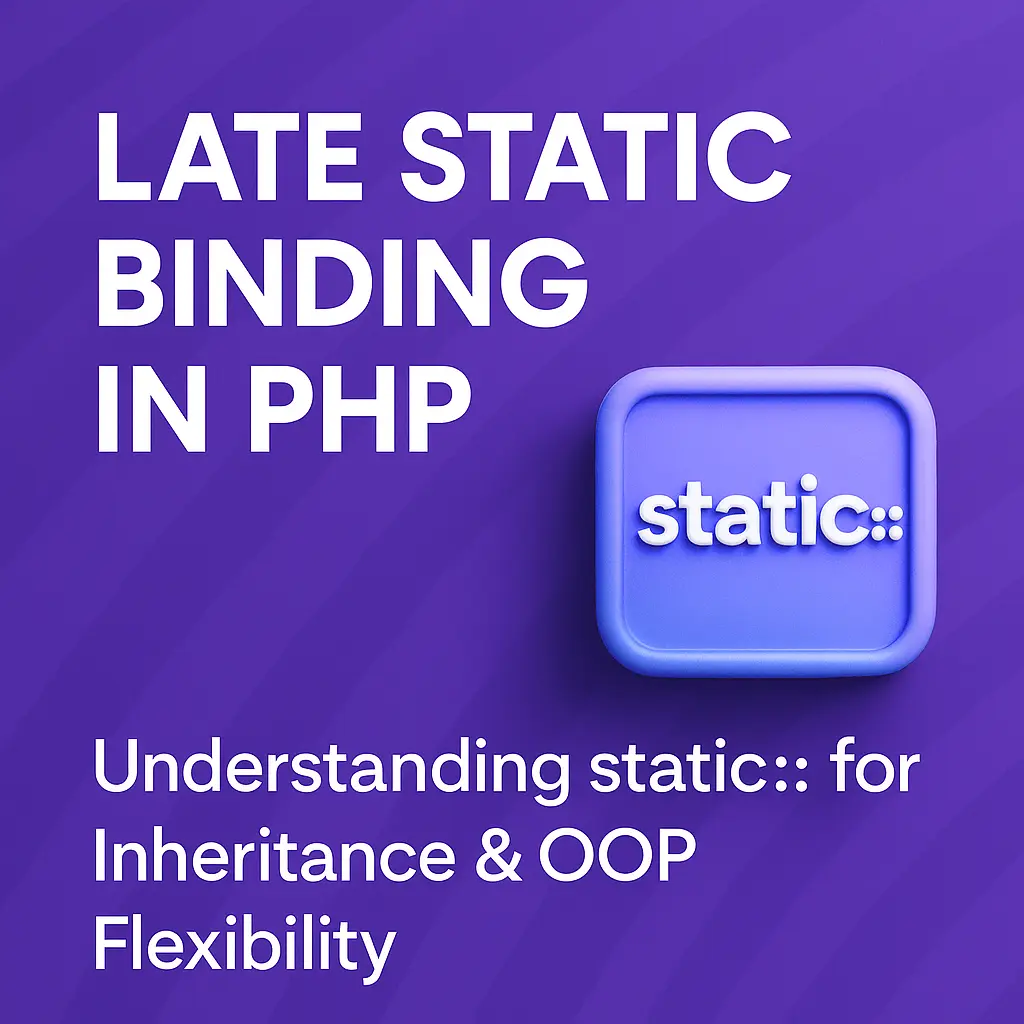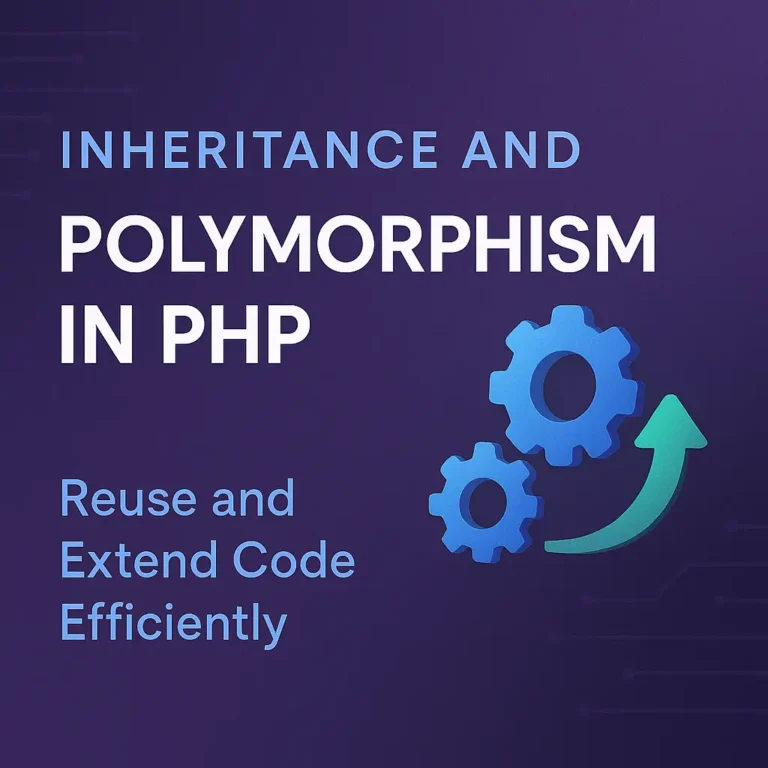However, this approach can lead to unexpected behavior in inheritance scenarios where subclasses are involved. Late Static Binding resolves these issues by allowing the scope to be determined at runtime, thus ensuring that the method calls are resolved in the context of the actual called class rather than the class where the method is originally defined.
Early Static Binding: A Brief Overview
Before diving into Late Static Binding, it’s essential to understand how early static binding works. In early static binding, static methods and properties are resolved based on the class where they were initially defined, not where they are called from.
Here is an example demonstrating early static binding:
class ParentClass {
public static function who() {
echo __CLASS__;
}
public static function test() {
self::who();
}
}
class ChildClass extends ParentClass {
public static function who() {
echo __CLASS__;
}
}
ChildClass::test(); // Outputs "ParentClass"
In the above example, self::who() in ParentClass::test() calls ParentClass::who(), not ChildClass::who(), because self refers to the class in which the method is defined.
Introducing Late Static Binding
Late Static Binding provides a way to reference the called class dynamically, enabling more flexible and predictable behavior in inheritance scenarios. This is achieved using the static:: keyword instead of self::.
How Late Static Binding Works
Let’s revise the previous example using Late Static Binding:
class ParentClass {
public static function who() {
echo __CLASS__;
}
public static function test() {
static::who();
}
}
class ChildClass extends ParentClass {
public static function who() {
echo __CLASS__;
}
}
ChildClass::test(); // Outputs "ChildClass"
With static::who(), the who method of ChildClass is called instead of ParentClass. The static:: keyword defers the method call resolution to runtime, ensuring that the most derived implementation is used.
Practical Examples of Late Static Binding
Late Static Binding is particularly useful in large applications where classes may have multiple layers of inheritance, and the behavior of static methods needs to be consistent with the actual runtime class.
Example 1: Singleton Pattern
A common use case for Late Static Binding is the Singleton pattern. Here’s an example demonstrating how LSB can be used to implement a Singleton pattern:
class Singleton {
private static $instances = [];
protected function __construct() {
// Prevent direct object creation
}
public static function getInstance() {
$cls = static::class;
if (!isset(self::$instances[$cls])) {
self::$instances[$cls] = new static();
}
return self::$instances[$cls];
}
private function __clone() {
// Prevent object cloning
}
private function __wakeup() {
// Prevent unserializing
}
}
class MySingleton extends Singleton {
// Custom behavior or properties
}
$instance1 = MySingleton::getInstance();
$instance2 = MySingleton::getInstance();
var_dump($instance1 === $instance2); // bool(true)
In this example, static::class ensures that getInstance() returns an instance of the called class (MySingleton), not the parent Singleton class.
Example 2: Active Record Pattern
Another common scenario is the Active Record pattern, where LSB can help ensure that database operations are executed in the context of the correct class.
class ActiveRecord {
protected static $table;
public static function getTable() {
return static::$table;
}
public static function find($id) {
$table = static::getTable();
// Assume DB::fetch is a method to fetch data from the database
return DB::fetch("SELECT * FROM {$table} WHERE id = ?", [$id]);
}
}
class User extends ActiveRecord {
protected static $table = 'users';
}
class Post extends ActiveRecord {
protected static $table = 'posts';
}
$user = User::find(1);
$post = Post::find(1);
Here, static::$table ensures that each subclass (User and Post) uses its respective table name when performing database queries.
Advanced Usage of Late Static Binding
Example 3: Method Chaining with Static Return Types
Late Static Binding can also be leveraged for method chaining, particularly in fluent interfaces where methods return the instance of the current class.
class Base {
public function setProperty($value) {
$this->property = $value;
return $this;
}
public static function create() {
return new static();
}
}
class Derived extends Base {
public function setAnotherProperty($value) {
$this->anotherProperty = $value;
return $this;
}
}
$object = Derived::create()
->setProperty('value')
->setAnotherProperty('anotherValue');
var_dump($object);
In this example, static::create() ensures that the create method returns an instance of Derived, enabling method chaining to work correctly.
Example 4: Factory Method Pattern
The Factory Method pattern can benefit from Late Static Binding by ensuring that factories return instances of the correct class.
class Product {
public static function create() {
return new static();
}
}
class ConcreteProductA extends Product {
// Additional methods and properties for ConcreteProductA
}
class ConcreteProductB extends Product {
// Additional methods and properties for ConcreteProductB
}
$productA = ConcreteProductA::create();
$productB = ConcreteProductB::create();
var_dump($productA instanceof ConcreteProductA); // bool(true)
var_dump($productB instanceof ConcreteProductB); // bool(true)
Here, static::create() in the Product class ensures that each subclass’s create method returns an instance of the appropriate subclass.
Conclusion
Late Static Binding is a powerful feature in PHP that enhances the flexibility and maintainability of object-oriented code, especially in complex inheritance scenarios. By deferring the resolution of static references to runtime, static:: enables more dynamic and predictable behavior, allowing developers to build more robust and scalable applications. Whether implementing design patterns like Singleton, Active Record, or Factory Method, Late Static Binding is an invaluable tool in the PHP developer’s toolkit.






